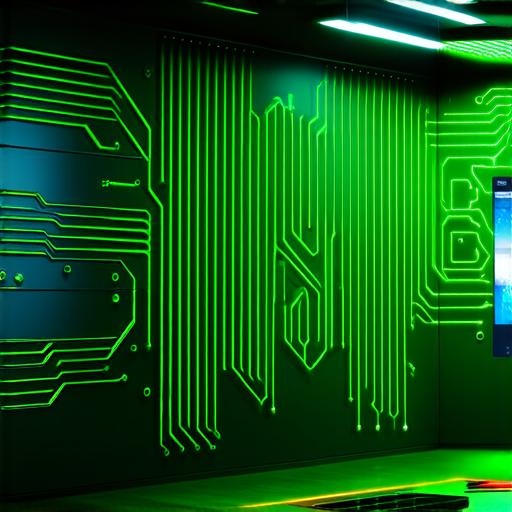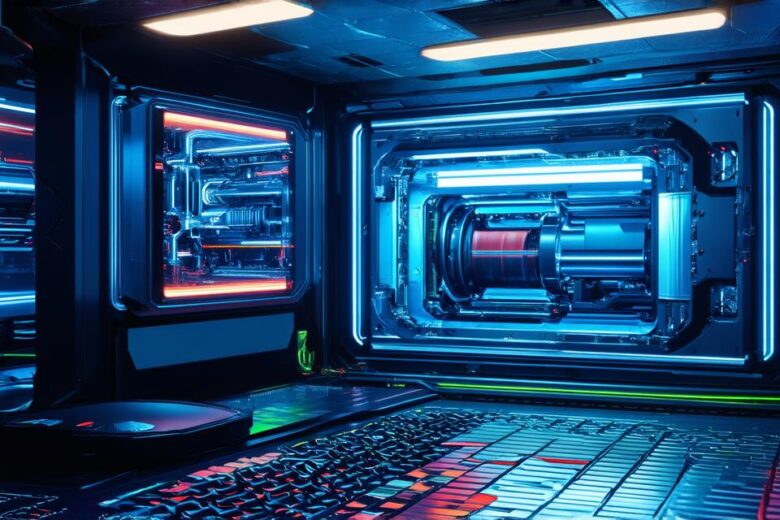Unreal Engine 5 (UE5) is a powerful game engine that allows developers to create stunning and immersive games. With its advanced features, UE5 has become the go-to tool for game developers looking to create multiplayer games.
Introduction
Multiplayer games have become increasingly popular in recent years, with millions of players worldwide enjoying the thrill of playing together against other players. With the rise of mobile gaming and online gaming platforms, multiplayer games are becoming even more accessible to a wider audience.
To create a multiplayer game, developers need to use a powerful engine that can handle the complexities of real-time networking and synchronization. UE5 is an ideal tool for this task, with its advanced features and support for cross-platform development.
Setting up the Environment
Before diving into game development, it is important to set up the environment and install the necessary tools. Here are the steps to get started:
- Install Unreal Engine 5: You can download UE5 from the Epic Games Store or from the official Unreal Engine website.
- Create a new project: Once you have installed UE5, create a new project by clicking on "File" > "New C++ Project". Give your project a name and choose a location to save it.
- Configure the game settings: In the project settings, configure the game settings such as resolution, aspect ratio, frame rate, and other graphics options. You can also set up audio options and network settings.
- Import assets: UE5 supports a wide range of file formats for importing assets, including 3D models, textures, animations, and sound effects. You can import these assets into your project by dragging and dropping them into the content browser or by using the import tools.
Creating Multiplayer Games in UE5
Now that you have set up the environment, let’s dive into game development. Here are the key concepts and tools used in creating multiplayer games in UE5:
- Networking: In a multiplayer game, players need to communicate with each other in real-time. This is achieved through networking, where data is sent between clients and servers. UE5 provides advanced networking features such as dedicated servers, peer-to-peer networking, and replication. These features allow developers to create seamless and responsive multiplayer experiences.
- Synchronization: In a multiplayer game, players need to see the same game state at all times. This requires synchronization between clients and servers, where changes made by one player are immediately reflected in all other players. UE5 provides tools for synchronizing game objects, components, and data across networks.
- Client-side prediction: In a multiplayer game, client-side prediction is used to reduce the amount of data sent over the network. This involves predicting future game states based on previous inputs and adjusting the game state locally when new data arrives. UE5 provides tools for implementing client-side prediction.
- Dedicated servers: In a multiplayer game, dedicated servers are used to host the game and manage network traffic. These servers provide a stable and reliable environment for players to connect to and play the game. UE5 supports dedicated servers out of the box.
- Cross-platform development: To reach a wider audience, developers need to create games that run on multiple platforms such as Windows, macOS, iOS, Android, and consoles. UE5 provides tools for cross-platform development, allowing developers to create games that run on all major platforms.
Creating a Multiplayer Game Example
To illustrate how to create a multiplayer game using UE5, let’s look at an example of creating a simple multiplayer shooting game.
Creating the Game World
The first step is to create the game world, including the terrain, buildings, and objects that players will interact with. This can be done using the level editor or by importing pre-made assets from third-party sources.
Adding Multiplayer Features
Once the game world is created, we need to add multiplayer features such as networking, synchronization, and client-side prediction. Here are the steps:

- Networking: In this example, we will use dedicated servers for hosting the game. We can set up a dedicated server using UE5’s built-in hosting tools or by using a third-party hosting service. Once the server is set up, we can create a networked game mode that allows players to connect to the server and play against each other.
- Synchronization: To ensure that all players see the same game state at all times, we need to synchronize the position, velocity, and orientation of game objects between clients and servers. UE5 provides tools for implementing this synchronization, including replication and interpolation.
- Client-side prediction: To improve performance and reduce network traffic, we can implement client-side prediction in our game. This involves predicting future game states based on previous inputs and adjusting the game state locally when new data arrives. UE5 provides tools for implementing client-side prediction.
- Multiplayer Game Mode: Finally, we need to create a multiplayer game mode that allows players to interact with each other and engage in combat. This can be done using UE5’s built-in physics engine, animation tools, and scripting capabilities.
Testing and Debugging
Once the game is created, it is important to test and debug it thoroughly to ensure that it runs smoothly and reliably across all platforms. Here are some tips for testing and debugging multiplayer games:
- Use a dedicated server for testing: When testing a multiplayer game, it is important to use a dedicated server for hosting the game. This ensures that all players see the same game state and eliminates issues caused by network lag or unstable connections.
- Test on multiple platforms: To ensure that the game runs smoothly on all platforms
